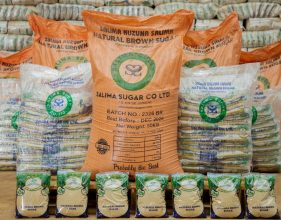Malawi to spend K34bn on food
 Malawi plans to spend about K34 billion ($102.5 million) over the next 18 months in response to the current food shortages in several districts across the country.
Malawi plans to spend about K34 billion ($102.5 million) over the next 18 months in response to the current food shortages in several districts across the country.
This revelation comes at a time the economy is battling with other challenges, notably lack of forex and fuel as well as underproductivity.
In the 2012/13 Food Insecurity Response Plan launched on Monday, government said so far it has raised about K13.4 billion ($41.25 million) of the required amount. In this regard, Minister of Finance Ken Lipenga appealed to various stakeholders, including donors, to assist in raising the balance of K19.9 billion ($61.28 million).
“Considering the economic situation the country is currently going through, it is not possible for government alone to mobilise all the resources required. I would, therefore, like to appeal for financial and in-kind assistance from our development partners for the implementation of the plans,†said Lipenga at the official launch of the plan.
The plan was launched alongside the Resilience Strategy for Food Security aimed at mitigating and reversing the negative knock-on effects of the food shortage.
The strategy is expected to cost about K960 million ($3 million), according to Lipenga.
The response plan mainly focuses on agriculture and food security; nutrition; education; and protection response and is using three interventions of food distribution; the public works programme; and cash transfers.
Under the agriculture and food security, the plan shows that out of the total required amount, $62.7 million (almost K20.38 billion) will go towards targeted food distributions and cash transfers for three to eight months across 16 affected districts.
The document further shows that $33.42 million (almost K10.86 billion) will go towards agricultural support to food insecure populations for 24 months up to July 2014.
Almost $7.062 million (almost K2.295 billion) will go towards nutrition where 34 344 acutely malnourished children and 68 367 moderately acutely malnourished children and pregnant or lactating women will benefit for the next eight months.
The document also indicates that almost $8.353 million (almost K2.7 billion) will go towards School Feeding Programme where 717 000 learners are expected to benefit in the coming seven months.
While Malawi Government is contributing towards the plan through maize from the Strategic Grain Reserves (SGR), other partners such as the UK’s Department for International Development DfID), United States Agency for International Development (Usaid), World Food Programme (WFP) and Norway are supporting both in cash and in kind.
The K33 billion bill towards food insecurity response is coming at a time when government spends almost K40 billion to support the Farm Input Subsidy Programme (Fisp) which also targets the vulnerable and poor households.
Deputy Minister of Economic Planning and Development Khwauli Msiska said this year, the food shortage problem has not only affected the poor.
Out of the now 16 districts affected by the food shortage in the country, he singled out Balaka, Blantyre, Chikhwawa, Mulanje, Mwanza, Neno, Nsanje, Ntcheu, Salima and Thyolo as those where even the middle wealth groups are affected.
Msiska said apart from erratic rains and prolonged dry spells, the recent devaluation of the kwacha and the fuel problems have worsened the situation, especially by weakening the coping capacity of communities.
In September 2012, WFP said it required about K430 million to reach out to 1.6 million households with food aid due to the crop failure and high prices.
Â





